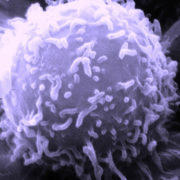Influence of Normo- and Hypogonadal Condition, Hyperuricemia, and High-Fructose Diet on Renal Changes in Male Rats
International Journal of Endocrinology Volume 2017 (2017), Article ID 1623597
Jimena Soutelo,1,2 Yanina Alejandra Samaniego,1 Elsa Zotta,1 María Cecilia Fornari,3 Carlos Reyes Toso,1 and Osvaldo Juan Ponzo1
1Department of Physiology, Medicine School, University of Buenos Aires (UBA), Buenos Aires, Argentina
2Endocrinology Service Medical Complex, Argentine Federal Police (PFA), Churruca-Visca Hospital, Buenos Aires, Argentina
3Laboratory Fornari-Bioalpha, Buenos Aires, Argentina
Abstract
Background. There is a gender disparity in the incidence, prevalence, and progression of renal disease. The object of this paper is to evaluate the presence and type of renal lesion in normogonadic and hypogonadic male rats in a mild hyperuricemia induced condition and exposed to a high-fructose diet. Methods. 56 adult male Wistar rats were used. Animals were divided into two groups, one normogonadic (NGN) and one hypogonadic (HGN), and each group was divided into four subgroups in accordance with the treatment: control with only water (C), fructose (F), oxonic acid (OA), and fructose + oxonic acid (FOA). Renal changes were evaluated by measuring glomerulosclerosis, fibrosis, and arteriolar media/lumen (M/L) ratio. Results. The OA and FOA groups presented significantly hypertension (). The OA group significantly increased () the percentage of glomerulosclerosis as well as the FOA group (). When comparing NGN versus HGN, we observed a trend to a lower glomerulosclerosis in the latter. A higher arteriolar M/L ratio was observed in the OA () and FOA (). Conclusion. Hyperuricemia conditions and a high-fructose diet favor blood pressure increase together with changes in the arteriolar media/lumen ratio and renal glomerular damage. These changes were more apparent in normogonadic animals.










